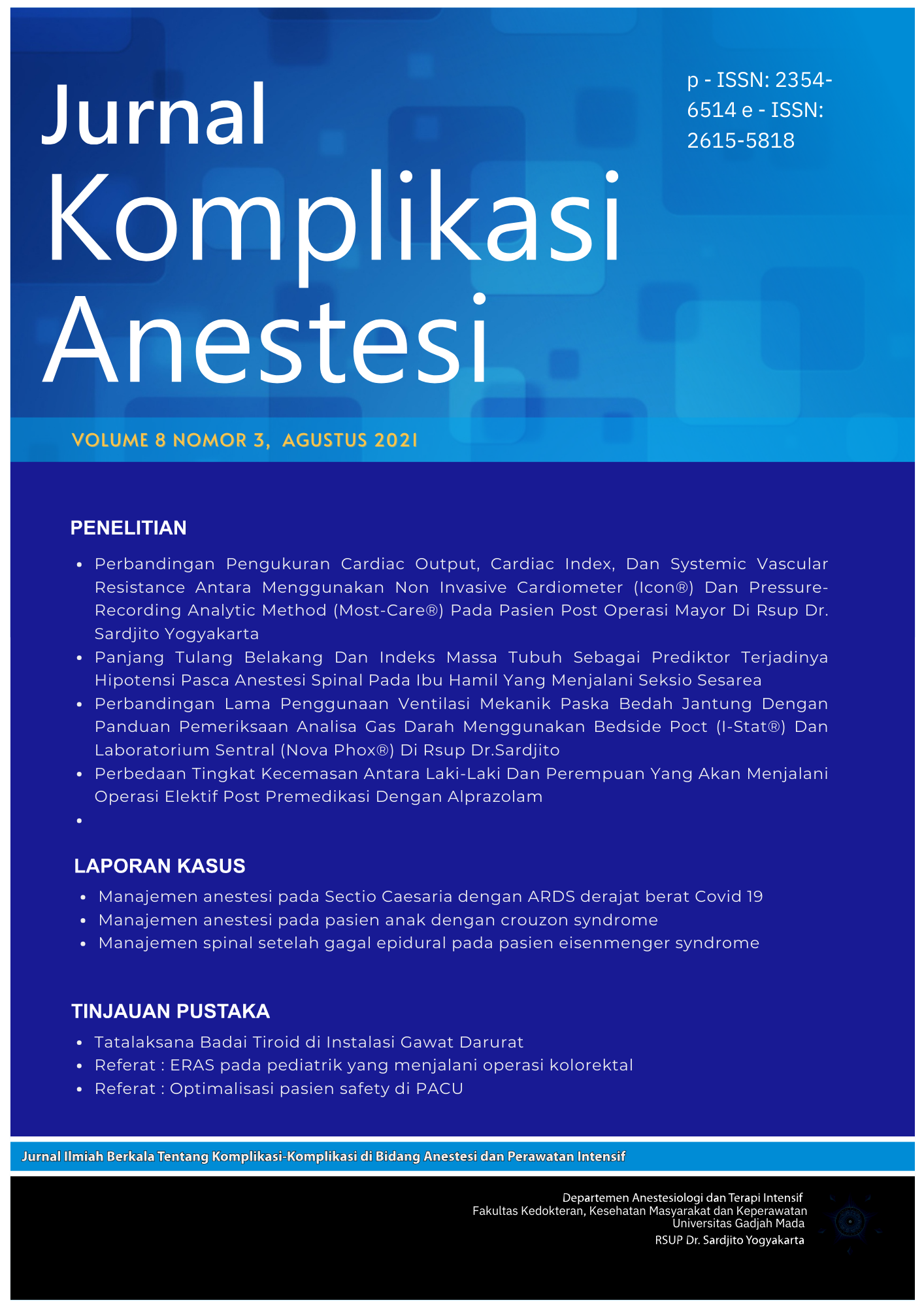Panjang Tulang Belakang dan Indeks Massa Tubuh sebagai Prediktor Terjadinya Hipotensi Pascaanestesi Spinal pada Ibu Hamil yang Menjalani Seksio Sesarea
Abstract
Background: Hypotension is one of the neuraxial anesthesia complications, whereas if not properly managed, might diminish the uteroplacental perfusion, cause fetal hypoxia, acidosis, and neonatal injury. Vertebral column length and body mass index are believed to have a role in predicting the incidence of hypotension after spinal anesthesia in parturients undergoing cesarean section because some research wasmentioned the correlation between vertebral column length and body mass index with sensory block height and vasopressor needs.
Methods: This research uses prospective observational, cross-sectional as the design. The sample size is 72parturient of physical status ASA 1 and 2 who will undergo caesarean section with spinal anesthesia. Hypotension is defined as a decrease in systolic blood pressure >20% compared with baseline measurement on the table before spinal anesthesia is given up to 20 minutes after spinal anesthesia.
Results: The mean vertebral column length in the hypotension group is 36,1 cm and no hypotension group is 33,6 cm. Statistically, this condition doesn’t show a significant difference (p=0,076). While in body mass index, mean body mass index in hypotension group is 32,7 kg/m2 and no hypotension group is 27,6 kg/m2. Statistically, this shows significant difference (p=0,0001).
Conclusion: Vertebral column length was not significant in predicting incidence of hypotension after spinal anesthesia in pregnant women undergoing caesarean section. Whereas, body mass index has significant difference so it can be used to predict the incidence of hypotension after spinal anesthesia in pregnant women undergoing caesarean section.
Copyright (c) 2021 Angga Aditya Wirawan, Yusmein Uyun, Ratih Kumala Fajar Apsari

This work is licensed under a Creative Commons Attribution-NonCommercial-ShareAlike 4.0 International License.
The Contributor and the company/institution agree that all copies of the Final Published
Version or any part thereof distributed or posted by them in print or electronic format as permitted herein will include the notice of copyright as stipulated in the Journal and a full citation to the Journal.

















